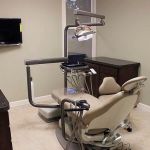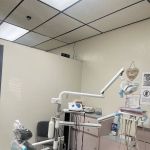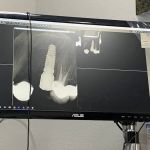Tooth Extraction for Braces: What You Need to Know
- 1. Why Is Tooth Extraction Necessary for Braces?
- 2. The Process of Tooth Extraction for Braces
- 3. What to Expect Before, During, and After the Procedure
- 4. Case Study: A Real-Life Example of Tooth Extraction for Braces
- 5. How Tooth Extraction Improves Orthodontic Results
- 6. Alternatives to Tooth Extraction in Orthodontics
- 7. Conclusion: Take Action for a Successful Orthodontic Treatment
1. Why Is Tooth Extraction Necessary for Braces?
Tooth extraction is a common procedure that may be necessary when you are undergoing orthodontic treatment, particularly when braces are involved. The primary reason for tooth extraction is to create sufficient space in the mouth for the teeth to align correctly. For patients with overcrowded teeth, or those whose teeth are out of alignment, removing one or more teeth can significantly help to achieve optimal results.
While some people may have concerns about removing healthy teeth, it’s important to understand that this procedure helps achieve a better overall bite and improves the effectiveness of braces. Often, the decision to extract teeth is made based on the size of the patient’s mouth and the amount of space needed for the teeth to move into the correct position.
2. The Process of Tooth Extraction for Braces
The tooth extraction procedure itself is fairly straightforward. Your dentist or orthodontist will typically take X-rays to assess the positioning of the teeth and identify which ones need to be removed. The extraction will then be scheduled, and you will be given local anesthesia to numb the area around the tooth that will be removed.
In some cases, if the tooth is impacted or difficult to remove, the procedure may take a little longer, but it is generally done in an office setting with minimal discomfort. For patients with anxiety or fear of dental procedures, sedation options can be discussed to ensure a more comfortable experience.
3. What to Expect Before, During, and After the Procedure
Before the Procedure
Before the extraction, your orthodontist will explain why the procedure is necessary and what to expect. Depending on your specific case, they may recommend certain preparations such as avoiding food and drink before the procedure or taking any prescribed medications.
During the Procedure
During the tooth extraction itself, you will be given local anesthesia to numb the area around the tooth. This ensures that you won’t feel pain during the procedure. You may feel some pressure as the tooth is loosened, but it should not be painful. If you’re nervous, discuss your concerns with your dentist—they may offer sedation to help you feel more relaxed.
After the Procedure
After the procedure, your dentist will provide instructions for care and recovery. This typically includes advice on managing pain and swelling, such as applying ice packs and taking over-the-counter pain relievers. You will also be given guidelines for food and drink to avoid during the recovery period to prevent irritation at the extraction site.
It’s normal to experience some swelling and discomfort in the first few days, but most people recover fully within a week. If you experience any issues, such as excessive bleeding or signs of infection, be sure to contact your dentist right away.
4. Case Study: A Real-Life Example of Tooth Extraction for Braces
Meet Sarah, a 28-year-old patient who needed tooth extraction as part of her braces treatment. She had been dealing with overcrowded teeth for years, which caused discomfort and affected her smile. After consultations with her orthodontist, Sarah was advised to extract two of her premolars to create enough space for her other teeth to move into the correct position.
After the extraction and a few weeks of recovery, Sarah began her orthodontic treatment. With her teeth now aligned properly, her treatment time was shortened, and the final result was a beautiful smile she had always dreamed of. Sarah’s experience highlights the importance of tooth extraction for creating an optimal foundation for braces.
5. How Tooth Extraction Improves Orthodontic Results
Tooth extraction for braces can significantly enhance the overall results of your orthodontic treatment. By removing teeth that are overcrowded or misaligned, you create the necessary space for the remaining teeth to shift into the desired positions. This leads to a more balanced bite and improved alignment.
Faster and More Effective Treatment
In cases of severe overcrowding, tooth extraction can expedite the process of moving teeth into the right place. Without enough space, it can be difficult for braces to effectively reposition teeth, and this can extend the length of the treatment. By extracting a few teeth, the remaining teeth can shift more easily and quickly, potentially reducing the overall treatment time.
6. Alternatives to Tooth Extraction in Orthodontics
While tooth extraction is a common solution in orthodontics, there are alternatives for certain patients. For instance, some patients may opt for expanders or other dental appliances to create more space in the mouth without the need for extractions. Your orthodontist will discuss these options with you, depending on your specific case.
It's important to remember that the choice to remove teeth is made with your best interests in mind. If you have concerns or would like to explore alternatives, it’s crucial to have an open discussion with your orthodontist to find the right treatment plan for your needs.
7. Conclusion: Take Action for a Successful Orthodontic Treatment
Tooth extraction may seem daunting, but it plays an essential role in creating the best possible outcome for your braces treatment. By making space for your teeth to move into the ideal position, you can achieve a smile that not only looks great but functions properly. If you're considering braces and need more information about tooth extraction, visit Dentistry Toothtruth to schedule your consultation and start your journey to a perfect smile today.







 Great Expressions Dental Centers - Peachtree City4.0 (406 review)
Great Expressions Dental Centers - Peachtree City4.0 (406 review) Metropolitan Endodontics4.0 (307 review)
Metropolitan Endodontics4.0 (307 review) St. Mary's Family Dentistry4.0 (243 review)
St. Mary's Family Dentistry4.0 (243 review) Tyler Dental Center5.0 (7 review)
Tyler Dental Center5.0 (7 review) East Valley Periodontics4.0 (993 review)
East Valley Periodontics4.0 (993 review) Dr. Mahtab Azimi, DDS1.0 (1 review)
Dr. Mahtab Azimi, DDS1.0 (1 review) The Importance of Oral Health Education During Pregnancy for a Healthy Pregnancy
The Importance of Oral Health Education During Pregnancy for a Healthy Pregnancy Best Tips for Brushing Your Teeth Properly for Healthy Gums: Essential Techniques for Oral Health
Best Tips for Brushing Your Teeth Properly for Healthy Gums: Essential Techniques for Oral Health Why Skipping Dental Checkups Can Lead to Bigger Oral Health Problems
Why Skipping Dental Checkups Can Lead to Bigger Oral Health Problems Advantages of Porcelain Dental Restorations
Advantages of Porcelain Dental Restorations How Can Diabetes Cause Tooth and Gum Problems? Preventing and Managing Oral Health Issues
How Can Diabetes Cause Tooth and Gum Problems? Preventing and Managing Oral Health Issues Healthy Habits for Promoting Good Oral Health and Hygiene: Tips for a Healthy Smile
Healthy Habits for Promoting Good Oral Health and Hygiene: Tips for a Healthy Smile